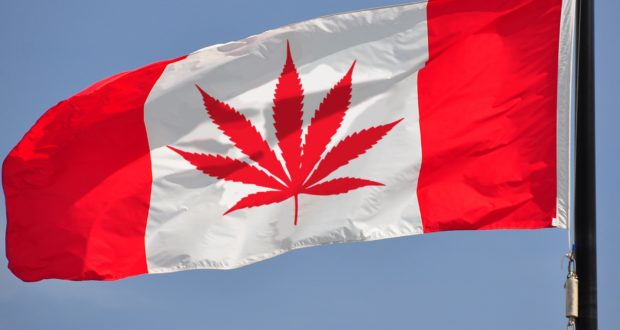– ubi jus est aut vagum aut incertum, ibi maxima servitus prevalebit –
On April 13, 2017, the Liberals introduced a long-awaited marijuana legalization law, Bill C-45, officially titled “An Act respecting cannabis and to amend the Controlled Drugs and Substances Act, the Criminal Code and other Acts.” The bill has now passed the House of Commons and is currently before the Senate. In the lead up to the bill’s introduction, the mood among consumers and producers of cannabis-related products was hopeful, and market-capitalization of cannabis-related businesses increased dramatically. But these high expectations were ultimately met with disappointment following the introduction of the bill. Indeed, the stock prices of enterprises in the cannabis industry fell on average more than 7-8% the same day Bill C-45 was introduced. [1]
The market’s response can naturally be explained by a number of factors, but one of them is undoubtedly a lack of guidance and clarity in the proposed law.[2] One of the hallmarks of a free society governed by the rule of law is that the people know and understand what the law is. The “players,” in other words, understand the “rules of the game” before the game is played. Bill C-45 unfortunately falls short of this standard, and specifically in regard to what constitutes a “cannabis accessory”.
The Term “Cannabis Accessory”
The term “cannabis accessory” is employed throughout Bill C-45. It appears in numerous parts of the bill, including prohibitions on promotions,[3] packaging and labelling,[4] display,[5] selling and distribution.[6] It also appears in the definition of many other terms found in the bill, such as “brand element”, “brand-preference promotion”, “informational promotion” and “label”. In effect, cannabis accessories will be regulated and dealt with in the Act, hence the producers and sellers of such accessories will have to comply with its dispositions.
Perhaps most importantly, the term “cannabis accessory” appears in s.86(1)(c) of the bill, which has serious implications for personal privacy. Section 86(1)(c) provides that “an inspector may, for a purpose related to verifying compliance or preventing non-compliance with the provisions of this Act or of the regulations, enter any place, including a conveyance, in which they believe on reasonable grounds (c) any record, report, electronic data or other document relating to the promotion of cannabis, a cannabis accessory or a service related to cannabis is located.” [my emphasis] The stakes should not be understated.
But what exactly is a cannabis accessory? Section 2(1) of the bill purports to define the term. It states that a cannabis accessory is “(a) a thing, including rolling papers or wraps, holders, pipes, water pipes, bongs and vaporizers, that is represented to be used in the consumption of cannabis or a thing that is represented to be used in the production of cannabis; or (b) a thing that is deemed under subsection (3) to be represented to be used in the consumption or production of cannabis. (accessoire)” [my emphasis]. Moreover, section 2(3) states that “[f]or the purposes of the definition cannabis accessory, a thing that is commonly used in the consumption or production of cannabis is deemed to be represented to be used in the consumption or production of cannabis if the thing is sold at the same point of sale as cannabis.”
The Uncertainty with the Term
The aforementioned definition gives rise to uncertainty mainly because it encompasses “a thing that is represented to be used in the production of cannabis.” The problem is the following: producing cannabis will require many products and tools that are also required for many other activities. Effectively, this means that businesses that are thinly or remotely connected to the cannabis industry could be forced to comply with the relevant dispositions of the Act. Or they could not. The fact is that these businesses simply do not know if the Act will apply to their activities, and do not know if they should take the costly steps to prepare themselves in the eventuality that it .
For example, consider a company who has been, for many years, building and installing greenhouses for producers of tomatoes, garlic, lavender, etc., and now all of the sudden counts a few cannabis producers as clients. Maybe the installations will be counted as a “cannabis accessory” and this company will be subject to the Act. Or consider a company that has been servicing buildings with hydroponic and irrigations systems for a long time that could be put in the same situation; if their systems are deemed a “cannabis accessory”, the Act could apply to them as well.
In reality, there are a tremendous number of businesses that have almost nothing to do with cannabis specifically but that could nevertheless be swept up by the Act. This includes, but is not limited to, companies that (1) make specific types of lamps and bulbs, (2) provide ventilation systems, (3) sell temperature regulation devices, (4) are in the business of fertilizers and soil, and (5) provide any technology to track the growth and the quality of the plant.
Understandably, the broad wording aims to regulate activities of business that are related to the production of cannabis, despite not being cannabis producers themselves. But, the wording as it stands is impermissibly vague, and this prevents businesses, market players and the public as a whole from knowing precisely what business activities will be subject to the rules. There are many unanswered questions regarding what constitutes a cannabis accessory:
- Is the mere fact that cannabis producers use the products in producing the cannabis sufficient to qualify the product as a cannabis accessory?
- Does the product used in the production of cannabis need to be cannabis-specific?
- Does the sale from the producer of the accessory to the cannabis producers have to be direct?
- Does the branding or marketing of the product used in the production of cannabis have to be directed toward cannabis producers?
- Does advertising a product in cannabis-related magazines like High Times, Cannabis Culture, Cannabis Now automatically qualify this product as a cannabis accessory?
Final Thoughts
The legal philosopher Gustav Radbruch regarded legal certainty as one of the three fundamental pillars of law.[7] The United-Nations has similarly recognized that legal certainty is an essential element of the Rule of Law.[8] And the Supreme Court has said that certainty and predictability are two of the central values underpinning the rule of law [9] In short, people have to know with relative certainty what the law is so that they can plan their lives accordingly. Bill C-45 falls noticeably short of this benchmark.
It is worth contrasting the definition of “cannabis accessory” in Bill C-45 with the term “tobacco accessory” in the Tobacco Act.[10]:“accessory means a product that may be used in the consumption of a tobacco product, including a pipe, cigarette holder, cigar clip, lighter and matches.” The Tobacco Act employs precise terms and there can be little doubt as to whether an item will be captured by the Act.
Conversely, while Bill C-45 refers to specific items, it also states that a thing will be subject to regulation if it is “represented” to be a cannabis accessory. It is the inclusion of this clause that leaves us with a vague definition and a problematic bill. Parliament would be wise to follow the example of the Tobacco Act and amend this bill to omit this latter clause altogether. The rule of law is not served by leaving the public in the dark as to what businesses and commercial activities will be captured by the new law.
Xavier F. Ménard is a law student at McGill University in Montreal.
[1] See e.g. charts Canopy Growth Corp: < https://www.bloomberg.com/quote/WEED:CN>; Aurora Cannabis: <https://www.bloomberg.com/quote/ACB:CN>; Aphria Inc.; < https://www.bloomberg.com/quote/APH:CN>.
[2] This was partly due to the decision from the federal government to give the provinces oversight of cannabis’ distribution, a decision that is probably most respectful of the distribution of powers set out in sections 91 and 92 of the Constitution Act, 1867.
[3] See ss. 17, 18, 19, 20, 21, 22, 24.
[4] See ss. 27, 28.
[5] See s. 30.
[6] See ss. 31, 32, 36, 37.
[7] See Heather Leawood “Gustav Radbruch: An Extraordinary Legal Philosopher” (2000) 2: 489 Washington University Journal of Law & Policy at 493.
[8] See United-Nations Security Council, “Report of the Secretary-General: The rule of law and transitional justice in conflict and post-conflict societies” (2004) S/2004/616 at page 4, para 6.
[9] R. v. Ferguson, [2008] 1 S.C.R. 96, at para. 69
[10] SC 1997, c 13, s2.
 Advocates for the Rule of Law
Advocates for the Rule of Law




10 comments
Pingback: Are Canadian Legalization Laws Too Strict? - What's Hempening
Pingback: Are Canadian Legalization Laws Too Strict? - KushNode
Pingback: Are Canadian Legalization Laws Too Strict? – Green Leaf Omniverse
Pingback: Are Canadian Legalization Laws Too Strict? - Bmore Marijuana
Pingback: Are Canadian Legalization Laws Too Strict? · High Times – CannabisPR.online
Pingback: Are Canadian Legalization Laws Too Strict? | 1 WEED
Pingback: Are Canadian Legalization Laws Too Strict? | Marijuana Drug Facts
Pingback: Are Canadian legalization laws too strict? – CNCA Dispensary
Pingback: Are Canadian Legalization Laws Too Strict? | CannaWorkHere
Pingback: How Strict Can Canada Get With Marijuana Legalization Laws - A Continuation - Legalize Marijuana, Legal Weed, Marijuana Facts